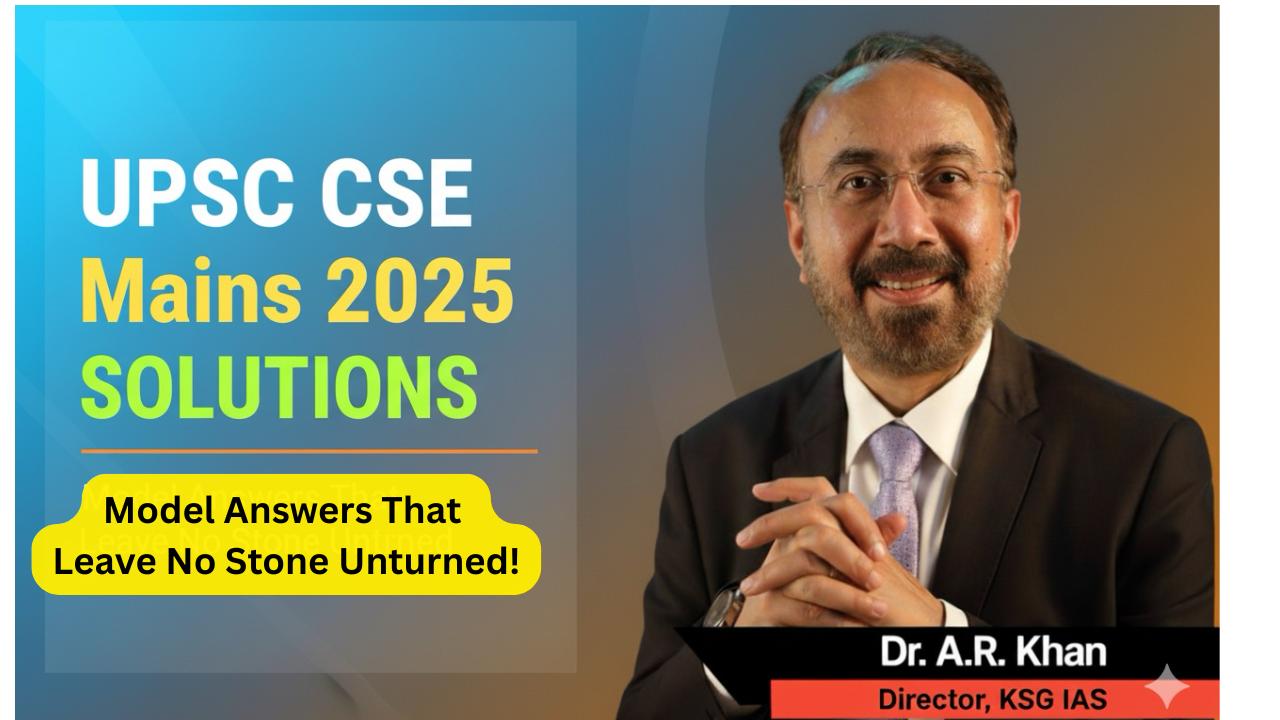Q. Achieving sustainable growth with emphasis on environmental protection could come into conflict with poor people’s needs in a country like India. Comment.
Possible Introductions
Fact-based
India, with 230 million people still in multidimensional poverty (UNDP MPI 2023), faces a dilemma: while sustainable growth requires environmental safeguards, immediate poverty alleviation often depends on resource-intensive growth.
Philosophical
As Indira Gandhi said at the 1972 Stockholm Conference, “Poverty is the greatest polluter.” In India, environmental goals often clash with survival needs of the poor.
Contextual
Whether in restrictions on mining, forest conservation, or emission controls, policies aimed at environmental protection sometimes constrain the livelihoods of the poor.
Main Body
1. Why Environmental Protection Conflicts with Poor People’s Needs
-
- Dependence on Natural Resources: Rural poor rely on forests, rivers, grazing lands → bans on logging, fishing, grazing affect livelihoods.
- Industrial & Infrastructure Projects: Closure of polluting industries (brick kilns, thermal plants) cuts jobs for unskilled workers.
- Restrictions on Land Use: Ecologically sensitive zones limit agricultural expansion or shifting cultivation (Northeast).
- Cost of Green Transition: Renewable energy, electric vehicles initially raise costs → poor face affordability issues.
- Displacement by Conservation Projects: Tiger reserves, biosphere reserves → tribal displacements. Example: Niyamgiri mining ban protected forests but left locals with limited livelihood alternatives.
2. Why Conflict is Not Absolute (Opportunities for Synergy)
-
- Sustainable Livelihoods: Renewable energy, ecotourism, afforestation create jobs. Example: Solar pumps under PM-KUSUM provide irrigation + clean energy.
- Climate Resilience for the Poor: Poor are most vulnerable to climate change (floods, heat waves, crop failure). Protecting environment safeguards their future.
- Inclusive Policies: Forest Rights Act (2006) balances tribal rights with conservation.
- Green Subsidies: LPG under Ujjwala Yojana reduces indoor pollution, benefits poor women.
3. India’s Balancing Approach
-
- Policy Integration: National Action Plan on Climate Change, National Green Mission, and SDG framework stress poverty–environment balance.
- Judicial Oversight: SC in Vellore Citizens’ Forum (1996) upheld “sustainable development” as constitutional principle.
- International Role: India’s Panchamrit commitments at COP26 aim for green transition without derailing growth.
Sweet Spot – Table
| Conflict Area | Poor People’s Need | Environmental Concern | Way Forward |
|---|---|---|---|
| Forests | Fuel, fodder, MFP | Deforestation | FRA, community forestry |
| Industry Jobs | Employment | Pollution | Green technologies, reskilling |
| Energy | Affordable cooking fuel | Carbon emissions | Ujjwala, solar |
| Farming | Expansion of land use | Soil & water degradation | Organic farming, micro-irrigation |
Possible Conclusions
Balanced
In India, the poor cannot be asked to choose between livelihood and environment; policies must integrate both.
Policy-linked
Schemes like MGNREGA (green works), PM-KUSUM (solar irrigation), Jal Jeevan Mission prove that sustainable growth can meet poor people’s needs if inclusively designed.
Philosophical
As Amartya Sen’s capability approach suggests, true development enhances freedoms — including the freedom to live in a clean environment without sacrificing livelihoods.
Forward-looking
India’s challenge is to turn the seeming conflict into a triple win: poverty alleviation, green growth, and ecological security, ensuring a just transition for the poor.

